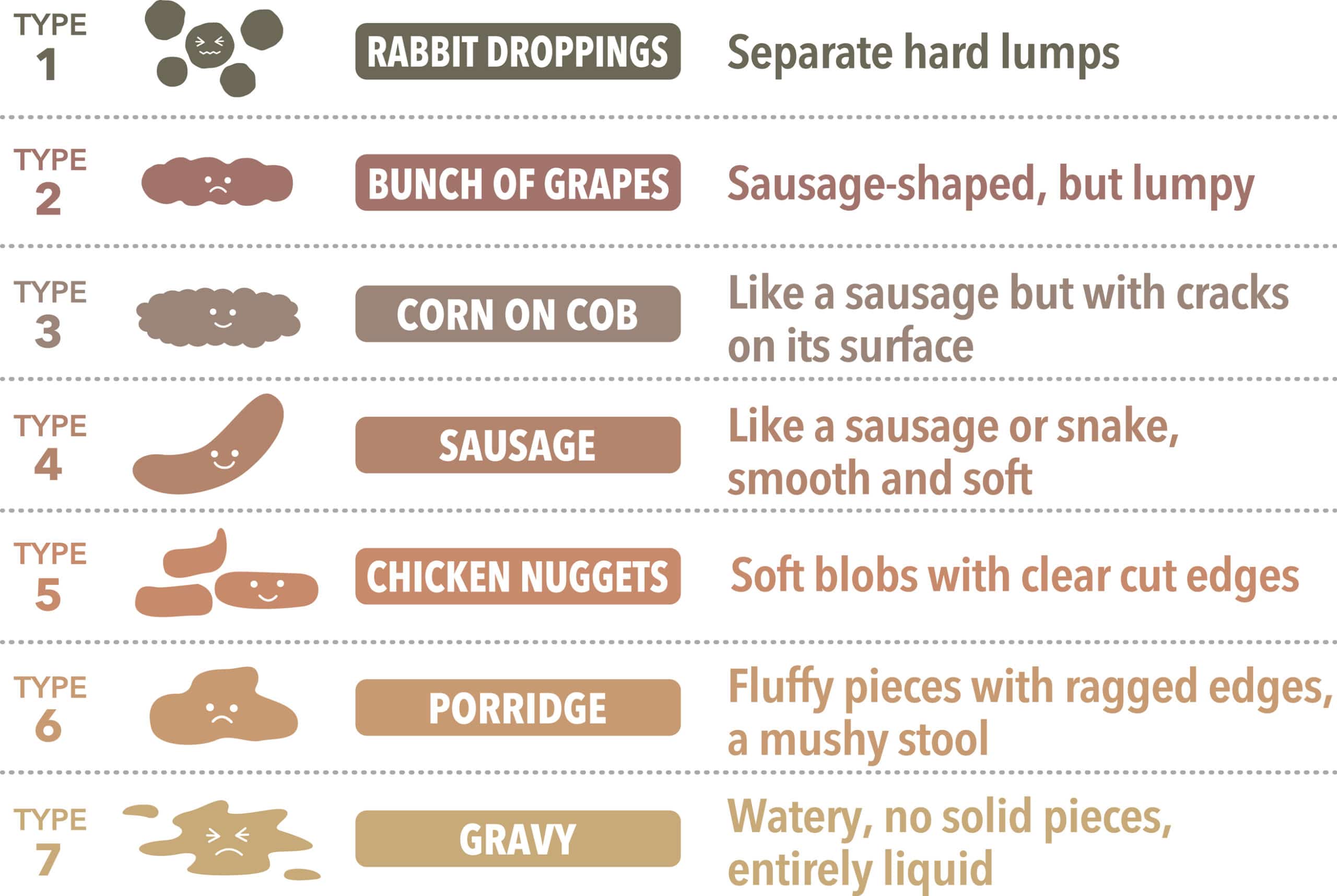How to get rid of phlegm and mucus in your throat?
(Getting Rid of Mucus and Phlegm In Your Throat Solutions!)
EASY! Get Throat Cleaner Here!
(Stop the cough with Medical Doctor formulated “Throat Cleaner” Vitaae®!)
Click Here For Transcript of "How to get rid of phlegm and mucus in the throat" Video
As a proud piece of poo, I’m not easily embarrassed but constantly clearing my throat and having to spit or swallow phlegm was embarrassing even for me!
While throat phlegm is generally healthy, it can be harmful when overproduced due to inflammation.
Acid reflux, allergies, COPD, infections, and LOTS of other things lead to inflammation so what’s a poo to do?!?!
Staying clear of smoking and vaping is a great start, and it’s super important to make sure the brain is not inflamed.
Nobody likes an inflamed brain… especially when it leads to throat phlegm!!
Check out my 4 favorite nutrients for brain inflammation and constantly clearing your throat at the link below.
As always, like for good poop, subscribe for great poop! See ya!
Waking up with that all-too-familiar sticky feeling in your throat or constantly feeling the need to clear your throat throughout the day is more than just annoying—it can be the signal your body is sending you about the need for a little internal housekeeping. The presence of phlegm and mucus is something many of us have experienced, often as a lingering souvenir of a cold or as part of our body’s response to allergens. Yet, it’s a topic surrounded by as many myths as remedies circulating out there.
The journey to understanding and alleviating the discomfort caused by phlegm and mucus in the throat doesn’t have to be a solitary or perplexing one. Imagine having a friend who’s sifted through the noise, a companion who offers not just hearsay but grounded advice on easing that throat clutter. That’s what this guide aims to be—your go-to manual for demystifying the excess mucus production dilemma, packed with actionable tips that you can easily incorporate into your daily routine.
Phlegm and mucus, while often used interchangeably, serve their unique purposes in our body’s defense system. They trap and eliminate irritants like dust, pollen, and bacteria, which are crucial to our immune health. However, when production goes into overdrive, it can lead to discomfort and, sometimes, more serious health concerns. Understanding the “why” behind the buildup is the first step in addressing it effectively.
This guide is designed to walk you through the essentials of managing and minimizing phlegm and mucus production. From simple lifestyle adjustments to natural remedies that have stood the test of time, you’ll find a variety of strategies to help clear your throat and breathe easier. It’s about empowering you with knowledge and practical solutions that fit into your life, prioritizing your well-being.
Sharing is caring, and this guide is meant to be shared in the spirit of looking out for one another, whether sending a quick email to a friend battling a seasonal cold or sharing a link on your social media, spreading the word on how to tackle phlegm and mucus effectively can make a big difference in someone’s day—and, potentially, their health. After all, who wouldn’t appreciate a friend reaching out with helpful advice when feeling under the weather?
Embark on this journey to clearer throats and freer breaths, armed with the correct information and a community of support behind you. Let’s clear the air, one tip at a time.
Lifestyle Tweaks for Mucus and Phlegm Relief
Amid the hustle and warmth of life, the discomfort of phlegm and mucus in the throat can dampen your spirit. Yet, outside the realms of diet, activity, or mental and spiritual practices, general lifestyle adjustments can bring you relief and comfort.
These changes are like gentle nudges towards a smoother day, ensuring your throat’s well-being without overwhelming your routine.
1. Hydration: The Unsung Hero
Staying well-hydrated is akin to keeping your body’s internal pathways slick and operational. Think of water as the gentle stream that carries away the debris of mucus and phlegm, preventing it from sticking around. For certain individuals using weight loss drugs, staying hydrated is particularly crucial. Some medications can influence how the body retains water, potentially affecting mucus consistency. Ensuring proper hydration supports both overall health and throat comfort.
Aim for glasses of water spread throughout the day, making it a natural reflex rather than a scheduled chore. This simple habit can transform your throat’s health landscape, offering a clear passage for your words and breath.
2. The Air You Breathe: A Quiet Guardian
Air quality in your living environment plays a silent but pivotal role in managing throat discomfort. Dry air, for instance, can be an unwitting accomplice to mucus buildup.
Consider a humidifier for your home, especially during dry months or in air-conditioned rooms, to introduce moisture back into your surroundings. This added humidity can soothe your throat and reduce the tenacity of phlegm.
3. Pillow Talk: The Angle of Comfort
Your sleeping posture might be whispering secrets to your throat without you realizing it. Elevating your head with an extra pillow at night can prevent mucus from pooling in your throat.
It’s a simple adjustment with no cost but plenty of benefits, ensuring gravity aids in keeping your throat clear till morning. Think of it as laying the foundations for a smoother start to your day.
4. The Silent Cleanse: Air Purification
Invisible to the naked eye, our homes can harbor allergens and irritants that coax mucus into unwelcome stay. Investing in an air purifier can act as your silent sentinel, filtering out the microscopic provocateurs of phlegm and mucus. It’s a gesture of care towards your living space that echoes back to your health, especially in areas where you spend the most time.
5. The Power of Pause: Smoke-Free Living
If you smoke, the invitation to pause and reconsider is ever-present. Smoking not only invites mucus production but also harms the delicate linings of your throat and airways. Stepping away from smoking and even avoiding secondhand smoke can significantly reduce throat irritation and mucus buildup.
It can also reduce a runny nose and swollen nasal passages. It’s a choice that reverberates through your health spectrum, clearing the air for your body’s healing and comfort.
Embracing these lifestyle changes doesn’t require a grand overhaul of your daily life but rather a series of thoughtful adjustments. Each step is a stride towards mitigating the nuisance of phlegm and mucus and enhancing your overall well-being.
Share these tips, for in sharing, we extend a hand of health and comfort to those we care about, weaving a tapestry of well-being that enriches us all.
Nourishing Moves: Diet Changes to Ease Phlegm and Mucus
In our quest for clarity—not just in thought but also in our throats—the foods we choose to eat play a starring role. It’s not just about what to avoid; it’s equally about embracing foods that support our body’s natural ability to manage and minimize mucus and phlegm.
Think of each meal as an opportunity to nourish your body and arm your immune system with what it needs to keep the airways clear and comfortable. Below are diet changes rooted in simplicity and science, designed to bring relief and resilience to your throat.
1. Warm, Soothing Liquids: A Gentle Embrace
Warm liquids can be a comforting balm for an irritated throat, helping to keep mucus thin for easier clearance. Herbal teas, such as ginger or peppermint, are not just soothing; they carry properties that help reduce mucus production.
A warm broth, rich in minerals and hydration, can also provide relief, making these liquids a gentle, healing embrace for your throat.
2. Antioxidant-rich Fruits: Nature’s Sweet Cleanse
Fruits rich in antioxidants and vitamin C, like berries and citrus fruits, can bolster your immune system while providing a natural, enzymatic action that helps break down mucus.
Incorporating these fruits into your diet introduces a sweet, natural cleanse, aiding your body to maintain balance and clarity in your throat.
3. Hydrating Vegetables: The Quiet Heroes
Vegetables with high water content, such as cucumbers and celery, offer hydration with every crunch. These quiet heroes of your diet are not just about water; they bring a host of vitamins and minerals that support overall health and, by extension, help manage mucus production.
Integrating a variety of these hydrating vegetables into your meals can add both texture and therapeutic benefits.
4. Pineapple: The Tropical Alleviator
Pineapple is not just a tropical treat; it contains bromelain, an enzyme known for its anti-inflammatory properties and ability to help with mucus breakdown.
Adding pineapple to your diet can be a delightful way to introduce a natural alleviator, making it a sweet, effective addition to your mucus management toolkit.
5. Turmeric: The Golden Spice of Relief
Turmeric’s active ingredient, curcumin, is celebrated for its anti-inflammatory and antioxidant properties.
Incorporating turmeric into your diet, whether as a spice in cooking or as a tea, can provide a golden touch of relief for your throat, aiding in the reduction of mucus production and offering a warming, healing embrace from within.
6. Garlic and Onions: The Pungent Protectors
Garlic and onions, with their intense flavors and natural antibacterial properties, can be powerful allies in your fight against excess mucus. These pungent protectors can boost your immune system while their natural compounds work to reduce mucus buildup.
Adding them to your dishes not only enriches flavor but also fortifies your body’s defenses.
7. Honey: The Sweet Soother
A teaspoon of raw, organic honey can do wonders for a throat irritated by coughing. Honey’s natural antibacterial properties and soothing texture make it an ideal sweet soother, helping to ease coughing and reduce mucus.
Its healing properties shine brightest when added to warm tea or taken by the spoonful.
Embarking on these diet changes is like setting sail on a gentle river, with each choice steering you towards clearer waters. Share these nourishing moves with friends and family; each tip shared is a beacon of health, guiding loved ones to a place of comfort and vitality.
FAQs on Cough and Phlegm Management
Questions abound when navigating the often murky waters of cough and phlegm relief. It’s a path well-trodden yet filled with uncertainties. Here, we aim to shed light on some of the most common queries, offering insights that turn the tide towards clearer breathing and comfort.
Let’s explore answers to questions lingering in your mind, providing a beacon of understanding in the fog of discomfort.
1. Why do I produce more phlegm when I have a cold or allergy?
When you catch a cold or are exposed to allergens, your body ramps up mucus production as a defense mechanism. This increase is your body’s way of trapping and expelling viruses or allergens. While it’s a sign that your immune system is at work, the excess can lead to difficulty breathing and discomfort.
Managing your exposure to known allergens and keeping your body hydrated can help manage the symptoms, easing the burden on your immune system.
2. Can certain foods make my cough and phlegm worse?
Yes, certain foods can exacerbate coughing and thick phlegm production. For some individuals, dairy products can thicken mucus, making it harder to clear from your throat. Similarly, highly processed foods, rich in sugar and fats, can inflame your body, increasing mucus production.
For certain individuals on weight loss drugs, monitoring food choices is even more important. These medications may heighten sensitivity to certain foods that trigger mucus production, making dietary adjustments essential for reducing discomfort and improving overall effectiveness.
Embracing a diet rich in fruits, vegetables, and lean proteins can help reduce inflammation and support your body’s natural ability to manage mucus.
3. Is it harmful to suppress a cough?
Suppressing a cough can be a double-edged sword. On the one hand, if your cough is productive, meaning it’s helping clear mucus and irritants from your lungs, suppressing it can lead to buildup and potential infection. On the other hand, if your cough is dry and non-productive, finding relief through safe suppressants can provide comfort and aid sleep.
Listening to your body and consulting with a healthcare provider can guide you to the best approach.
4. How can I tell if my cough is something more serious?
A cough that persists beyond three to eight weeks, especially if it’s accompanied by symptoms such as shortness of breath, chest pain, or blood in the mucus, warrants a closer look by a healthcare professional.
By the way, excess phlegm in the mucus in the throat triggering a cough can be caused by cystic fibrosis, lung disease, chronic obstructive pulmonary disease (COPD), respiratory infections, viral infection, chronic mucus hypersecretion, bacterial infection, pulmonary edema, chronic lung disease, and more.
Chronic coughs can also be a symptom of underlying conditions such as asthma, gastroesophageal reflux disease (GERD), or even infections. Early consultation can help identify the cause and guide appropriate treatment.
5. Are there any natural remedies that can help soothe my throat?
Natural remedies can offer gentle relief for cough and phlegm discomfort. Honey, especially when mixed into warm tea, has natural antibacterial properties and can soothe an irritated throat. With its anti-inflammatory properties, ginger can also ease throat discomfort and aid in mucus clearance.
Hydration also plays a crucial role; warm broths and herbal teas can keep your throat moist and help thin the mucus, facilitating easier breathing.
Embarking on the journey to manage cough and phlegm is a step towards understanding your body’s signals and responding with care. Armed with knowledge and proactive measures, you can confidently navigate this path, ensuring comfort and clarity along the way.
Breathe Easy: Sharing the Path to Relief
As we conclude our journey through the valleys of managing cough and phlegm, it’s clear that the steps toward clarity and comfort are many but manageable. Embracing changes in diet and lifestyle, understanding the whys behind our symptoms, and exploring natural remedies opens the door to breathing easier and speaking clearer.
This guide is a shared treasure meant to be passed along through the digital streams of emails and social media platforms. Share it with friends and family, for every shared piece of knowledge is a ripple in the pond of collective well-being, inviting everyone to breathe a little easier and live a little brighter.

Does your poo look this good? If you have Bristol Type 3 or 4 – your poop is considered “normal! Bristol Type 1 or 2, is where the poop is hard and difficult to pass, are indicative of constipation. Often, these types of stool can be painful to pass – but don’t worry – Doctor Poo has a recommended healthy-gut switch solution…just keep reading!
Should you ever worry about your poop?
Always consult your healthcare provider if you have any concerns about what your poop means. People are asked to call their health care providers if: They experience severe levels of abdominal pain or discomfort with diarrhea that does not go away when you poop or fart. Also, if diarrhea is accompanied by fever of 101 degrees Fahrenheit or higher, chills, vomiting, or fainting, call your physician immediately.
What is an unhealthy poop?
An unhealthy poop is when one poops too often (hence, your doctor asking you if you poop more than three times daily) or not pooping often enough (As such, less than three times a week) and also excessive straining when pooping. Poop that is colored red, black, green, yellow, or white. greasy, or fatty stools is unhealthy.
Help fix so many of your digestive and bathroom issues, such as gas and bloating and improve your overall health with this patented molecule that is backed by Harvard Doctor’s by clicking here!
Doctor Poo Provides More Valuable Answers for Those Hard to Ask Questions Below:













